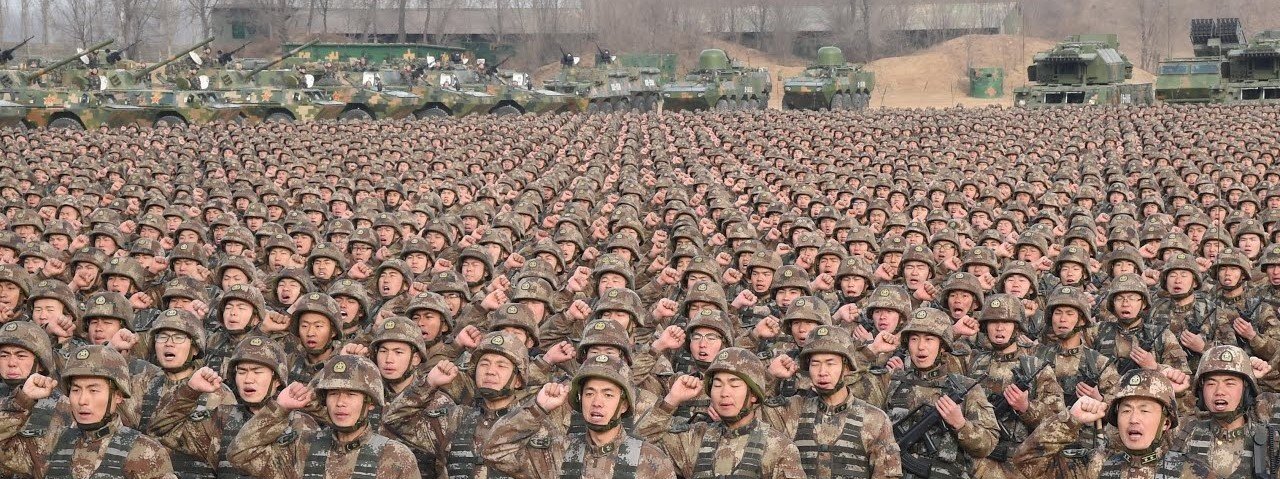

Jul
For an extended period of time, before Deng Xiaoping’s post-1978 reforms started kicking in, the Chinese military industry was best described by insiders as being in a “golden rice bowl” situation or in other words, receiving a significant percentage of China’s GDP but always somehow needing more and asking for more.
Deng Xiaoping decided it was time to tackle these issues by including the military sector in his Four Modernizations. From adding civilian leadership to the mix so as to tackle the many corruption problems the military sector was (in)famous for to being more open to (at least temporarily) embracing foreign technology and making the entire system less bloated by implementing reforms that enable the sector to function better without being as much of a burden on the nation’s budget through the percentage of China’s GDP it requires to function… let’s just say a lot has been done since 1978.
To make it clear just how inefficient the Chinese military sector was, it’s enough to simply mention that in 1980, it absorbed a staggering 16% of China’s GDP and was anything but able to pull its own weight. While there was indeed some export activity going on, it was hardly aimed at beefing up the military’s budget. Instead, it mostly involved selling weapons and ammunition to friendly nations at preferential pricing. In a nutshell, reforms needed to be implemented across all sectors.
Deng Xiaoping had to find the right balance between having a military force that is capable of guaranteeing the nation’s security and relieving the burden on the economy that it represents, in light of the fact that China needed robust economic growth so as to gradually catch up with the West and allocating 16% of its GDP in the direction of the military sector was… well, sub-optimal. By 1987, according to government estimates, the percentage of China’s GDP represented by military expenditures was pretty much cut in half (all the way down to 8.3%). While many analysts weren’t exactly in a hurry to trust those numbers, even the United State’s own research indicated that the percentage of China’s GDP represented by the military dimension went down, even if not by as much as the Chinese authorities waned everyone to believe.
Also, it is worth noting that for a country such as China, that as of a certain point grew almost exponentially in terms of nominal GDP, even a low(er) percentage of its GDP still provides a more than decent budget for the defense sector. A budget that gradually enabled the Chinese military industry to catch up and allocate more and more capital toward its own research and development efforts. It’s important to understand that the more a nation depends on foreign technology for its defense needs, the more vulnerable it can be considered. According to many analysts, the tide has turned and keeps turning, with China most likely overtaking its “mentor” Russia within the next decade. It is, however, not quite there yet. For example, it lacks the metallurgical refinement needed to create engines that are able to withstand extremely high temperatures for extended periods of time. As such, its jet engines for example still have lifetimes that tend to be ten times shorter than cutting-edge US or Russian jet engines and there are various other examples of technology transfers that are still taking place. The trend, however, is clearly in favor of reductions in this respect.
The same way, the trend was “tweaked” when it came to arms sales. While China did keep selling military products at preferential prices to nations such as North Korea, Egypt or Pakistan as of the 80s, they also reached out to Middle Eastern nations such as Iraq and Iran in a “for profit” manner. As this trend continued, arms sales became a significant revenue source for China, up from just 0.9% of China’s exports back in 1979 to 6.3% in 1983 and four years later, China became the world’s #5 arms seller, behind the US, the USSR, the UK and France.
Nowadays, the facts speak for themselves, with military funding for 2019 expected to be in the 1.18 trillion CNY zone, or approximately $176 billion (up 7.5% compared to the previous year). The same way, China’s military industry also stands to benefit from increased funding for China’s science and technology sector, a 13.4% YOY increase which brings the current value just north of 354 billion CNY.
However, not all is perfect when it comes to China’s military sector, with corruption still representing a major problem after Deng Xiaoping’s departure, as illustrated by the reluctance of his successor Jiang Zemin to quickly hand over his military power to Hu Jintao and by the fact that the current leader of China, Xi Jinping, implemented a series of drastic measures aimed at combating corruption after taking over in 2012, measures which included the departure of high-profile generals such as Guo Boxiong and Xu Caihou, the former People’s Liberation Army chief of staff Fang Fenghui and many others.
Yet despite corruption still being a problem and despite China still being dependent to a certain degree on foreign military technology, the trend is clear: with military spending going up in a sustained manner on a nominal basis and increased attention being paid to research and development, it’s only a matter of time until China’s military sector will become as robust as Deng Xiaoping hoped it would back in 1978.
